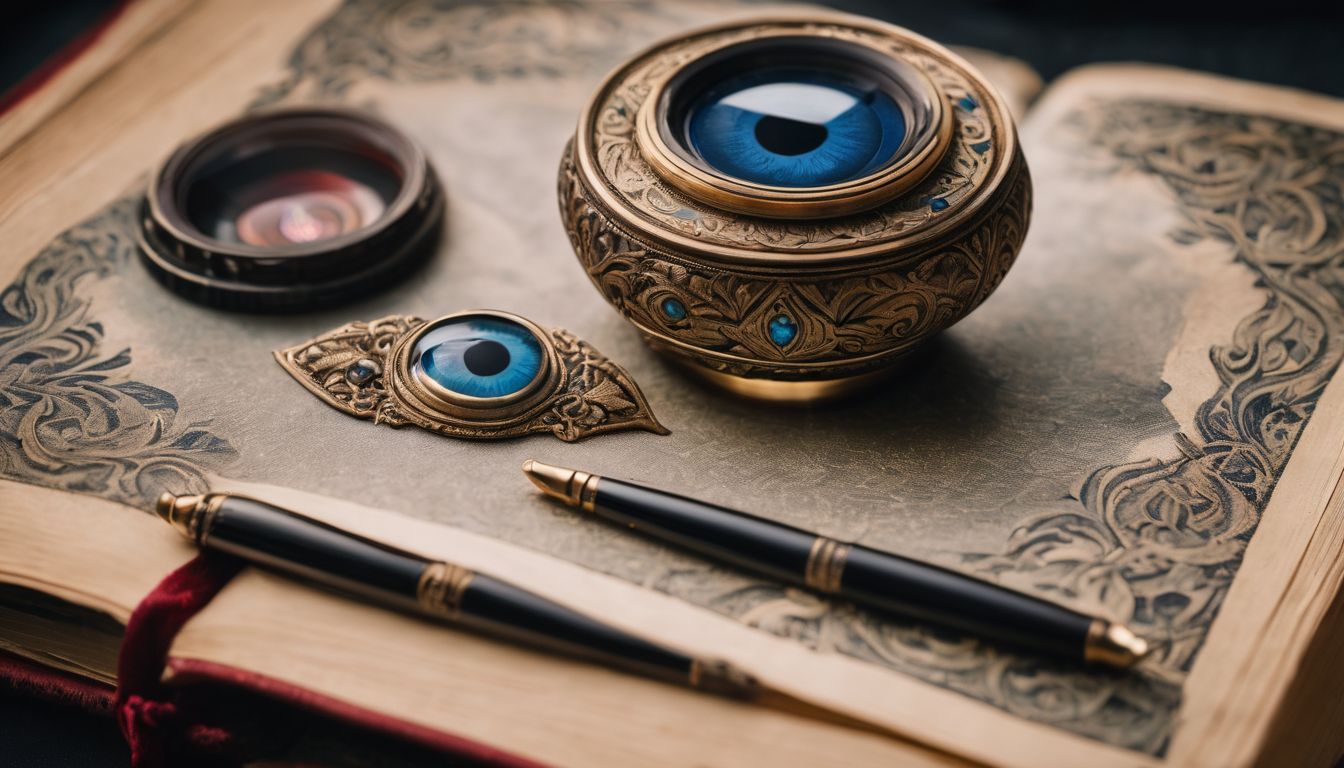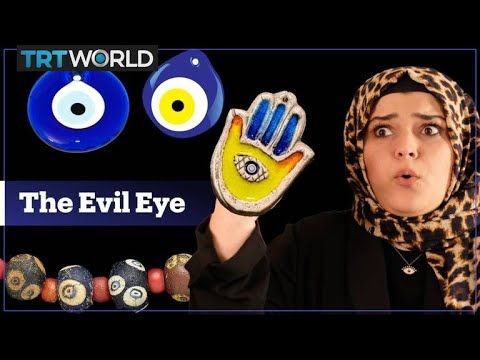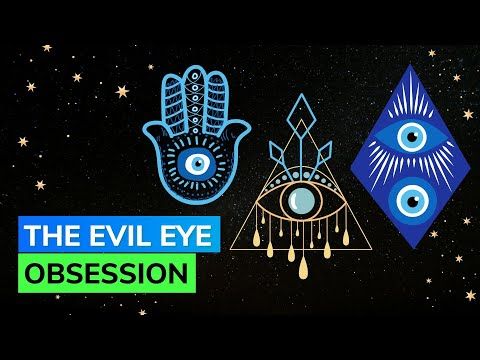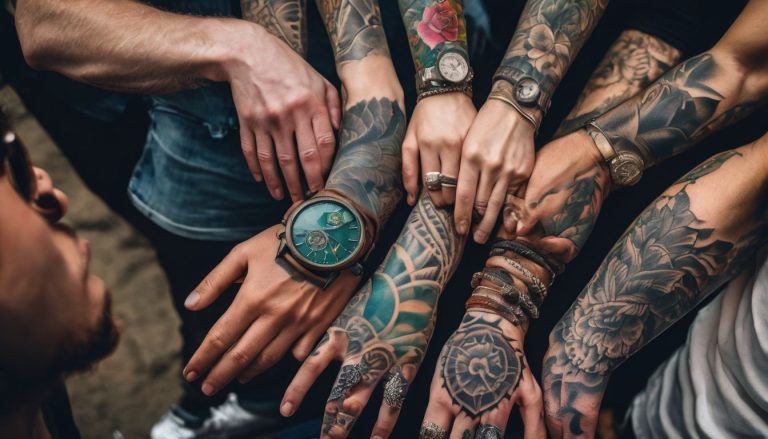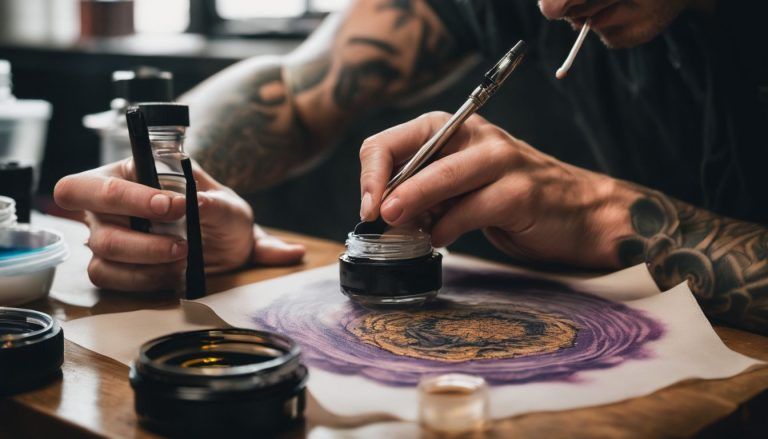Unveiling the Symbolism and History of Evil Eye Tattoos
Are you curious about the mysterious gaze of evil eye tattoos? Believed to fend off misfortune, this symbol has decorated skin for centuries. Our blog explores its rich history and powerful meanings, guiding you through a journey of cultural discovery.
Keep reading to uncover these intriguing ink secrets!
Key Takeaways
- Evil eye tattoos originate from ancient Mediterranean and Middle Eastern cultures, where they were believed to offer protection against negative energies like envy and misfortune.
- The symbol has evolved over time, gaining popularity in various religions including Islam, Hinduism, and across cultures in Greece, Turkey, and Italy, among others.
- In modern times, evil eye tattoos have become fashionable within the entertainment industry and among celebrities, contributing to their rise in popularity as a trendy yet meaningful tattoo choice.
- While some view the adoption of evil eye tattoos as cultural appreciation that honors heritage and personal beliefs, others argue it may border on cultural appropriation if not approached with understanding and respect for its origins.
- Social media platforms have significantly influenced the resurgence of this ancient symbol by allowing individuals to share their designs and experiences with a global audience.
The History of the Evil Eye
Originating from ancient beliefs and cultural significance, the history of the evil eye has evolved over time, with its presence in various religions and cultures.
Origin and cultural significance
The evil eye symbol has deep roots in Mediterranean and Middle Eastern regions, primarily emerging from countries like Turkey, Greece, and Italy. It carries a rich cultural significance, embodying beliefs about protection, prosperity, and warding off bad luck.
This ancient belief centered around a malevolent glare believed to bring misfortune or harm evolved into a widely recognized symbol across various cultures.
People have long turned to the nazar amulet or hamsa hand as famous talismans to deflect negative energies associated with the evil eye. These protectors found their way into handmade pieces of jewelry and art throughout history.
Now they are ingrained in global folklore as powerful symbols that keep away harm while bringing good fortune to those who display them.
Evolution of its meaning over time
From its early roots in ancient beliefs and superstitions, the meaning of the evil eye has evolved over time. What was once seen as a symbol of fear and protection against malevolent forces has transformed into a popular tattoo choice for those seeking to ward off negativity and embrace their cultural heritage.
Over the centuries, the concept of the evil eye has transitioned from being associated with fear and superstition to becoming an emblem of resilience and personal empowerment.
In various cultures, including Turkish, Greek, Italian, and Middle Eastern traditions, the symbolism surrounding the evil eye has adapted to reflect contemporary beliefs while still honoring its historical significance.
Individuals now view it not only as a symbol that protects them from envy and negativity but also as a representation of their unique identity and connection to rich cultural traditions.
Its presence in various religions and cultures
The evil eye symbol has a significant presence in various religions and cultures worldwide. It is not limited to one specific belief system or geographic location but has permeated many different societies throughout history. Its widespread influence reflects its enduring appeal and relevance across diverse communities.
- The evil eye holds a prominent place in ancient Greek and Roman mythology, where it was believed to have the power to bring misfortune or injury upon those who were the recipients of its malevolent gaze.
- In Islam, the concept of the evil eye, known as “nazar” or “ayin harsha,” is deeply ingrained in the culture and is often regarded as a real threat that requires protection through various rituals and talismans.
- Throughout the Middle East, including Turkey and Egypt, the belief in the evil eye remains prevalent, with protective talismans such as the nazar amulet serving as popular symbols for warding off its negative effects.
- In Hindu traditions, the evil eye is referred to as “drishti” or “nazar dosh,” and it is believed that malicious glances can result in harm or misfortune. As a result, protective measures are taken to guard against it.
- The presence of the evil eye can also be found in Mediterranean cultures such as Italy, where it is commonly known as “malocchio” and is believed to cause harm to others through envy or jealousy.
The Rise of Evil Eye Tattoos
The evil eye tattoo has seen a surge in popularity, especially within the fashion industry and among celebrities. Its mesmerizing design and symbolism have made it a sought-after choice for many looking to adorn their bodies with meaningful ink.
Emergence in the fashion industry
Evil eye tattoos have seen a significant emergence in the fashion industry, with an increasing number of people choosing this symbol for its unique aesthetic and cultural significance.
Celebrities sporting evil eye tattoos have notably contributed to its popularity, making it a sought-after design among tattoo enthusiasts. This trend has also led to a surge in customizable and contemporary interpretations of the evil eye motif, appealing to those seeking both trendy and meaningful body art options.
The rise of evil eye tattoos in the fashion sector reflects a growing interest in embracing diverse cultural symbols and their deep-rooted meanings. Embracing one’s heritage through body art has become a prevalent choice for individuals looking to express their beliefs and protect themselves from negative energies.
The use of evil eye motifs as fashionable tattoo designs underscores the evolving role of traditional symbolism in modern artistic expression.
Popularity among celebrities
The emergence of evil eye tattoos in the fashion industry has led to its increasing popularity among celebrities. Here are some reasons why it has become a sought-after trend among the stars:
- Many celebrities see evil eye tattoos as a fashionable way to embrace their heritage and cultural roots, showcasing their connection to ancient beliefs and traditions.
- Celebrities often view evil eye tattoos as a symbol of protection and good luck, which aligns with their desire for positivity and warding off negativity in their lives.
- Some celebrities use evil eye tattoos as a form of self – expression and empowerment, sending a message of strength and resilience against malevolent forces.
- The visibility of evil eye tattoos on popular influencers and public figures via social media has significantly contributed to its adoption among celebrities, further amplifying its appeal.
- Celebrity endorsements have propelled the trend of evil eye tattoos into the mainstream, influencing fans and followers to also embrace this symbol as a fashion statement and personal belief system.
- For many celebrities, getting an evil eye tattoo is a way to connect with their spiritual beliefs while also making a bold style statement that resonates with their fans.
- The versatility in design options for evil eye tattoos allows celebrities to personalize the symbol according to their individual taste, creating unique interpretations that reflect their personalities.
- In some cases, celebrity sightings proudly displaying these tattoos have sparked conversations about the deeper meanings and historical significance behind the symbolism, contributing to its widespread acceptance in contemporary culture.
- The portrayal of evil eye tattoos by influential figures in the entertainment industry has sparked curiosity and fascination among fans, propelling them to consider similar designs as meaningful additions to their own body art collections.
- Through red carpet appearances, social media posts, and media coverage, celebrities have played a significant role in popularizing evil eye tattoos as not just a trend but also a source of inspiration for individuals looking for meaningful ink that reflects positive energies and cultural pride.
Symbolism and Meaning of Evil Eye Tattoos
The evil eye tattoo symbolizes protection from envy and negativity, serving as a good luck charm for those who wear it. It also represents the embrace of one’s cultural heritage and traditions.
Protection from envy and negativity
Evil eye tattoos serve as a shield against envy and negativity, believed to deflect harmful energy and ward off ill intentions. The evil eye symbol, deeply rooted in cultural folklore, is thought to offer protection from the malevolent gaze of others.
Embodying the notion of good luck charm, this tattoo represents a powerful talisman against negative forces. Many cultures across Turkey, Greece, Italy, and beyond hold the belief that adorning oneself with the evil eye symbol can safeguard against jealousy and malicious intent.
In addition to its protective symbolism, evil eye tattoos also embody a sense of heritage and tradition for those who wear it. The intricate history behind this symbol has amplified its significance as a source of defense from harm and an emblem of cultural identity.
Embracing one’s heritage
Embracing one’s heritage can be a compelling reason for getting an evil eye tattoo. The symbolism and history of the evil eye symbol are deeply rooted in various cultures, such as Turkish, Greek, and Italian.
By getting an evil eye tattoo, individuals not only embrace their own cultural background but also pay homage to the age-old traditions and beliefs that surround this protective symbol.
In doing so, they carry a piece of their heritage with them wherever they go.
Moreover, embracing one’s heritage through an evil eye tattoo can serve as a potent reminder of ancestral wisdom and belief systems that have stood the test of time. It becomes a way to connect with one’s roots while also expressing personal style and beliefs.
Controversy and Criticism Surrounding Evil Eye Tattoos
Some argue that getting an evil eye tattoo is cultural appropriation, while others view it as a form of cultural appreciation. The misinterpretation and misrepresentation of the symbol also add to the controversy surrounding these tattoos.
Cultural appropriation vs. cultural appreciation
Evil eye tattoos have sparked debates surrounding cultural appropriation versus appreciation. It is crucial to recognize the significance of the symbol in various cultures, such as Turkish, Greek, and Italian.
While some individuals opt for evil eye tattoos solely for their visual appeal and trendy nature, others are deeply rooted in appreciating the historical and protective aspects associated with this ancient symbol.
Understanding the origins and meanings behind these tattoos can help differentiate between cultural appropriation and genuine cultural appreciation.
The controversy revolving around evil eye tattoos stems from the potential misinterpretation or misuse of a symbol deeply embedded in cultural heritage. It’s essential to acknowledge that while some may wear it purely as a fashion statement, others value its rich history and protective symbolism.
The use of evil eye imagery ought to be approached with respect for its traditional roots across different societies. Embracing this concept responsibly can foster an environment where diverse cultures are celebrated rather than exploited.
Misinterpretation and misrepresentation
Misinterpretation and misrepresentation of the evil eye symbol often stem from a lack of understanding about its cultural significance and history. This can result in oversimplified or incorrect interpretations, leading to misconceptions about its meaning and purpose.
Additionally, the commodification of the evil eye in fashion and pop culture has contributed to its portrayal as a trendy accessory rather than acknowledging its deep-rooted symbolism as a protection symbol against malevolent forces.
The misrepresentation of the evil eye symbol through commercialization can perpetuate misunderstandings about its historical significance and spiritual importance. As we delve into the controversy surrounding evil eye tattoos, it’s essential to recognize the impact of these misconceptions on how the symbol is perceived today.
The Modern-Day Meaning of Evil Eye Tattoos
Many people today choose to get an evil eye tattoo as a form of personal protection and to honor their cultural heritage. Social media has also played a significant role in the resurgence of this ancient symbol in modern tattoo art.
Personal beliefs and intentions behind getting a tattoo
Individuals often choose to get an evil eye tattoo based on their personal beliefs and intentions. Some see it as a symbol of protection against negative energies and envy, while others view it as a way to honor their cultural heritage.
The decision to ink the evil eye design is deeply rooted in one’s desire for symbolism and meaning, with many people embracing the idea of warding off ill-intentions through this timeless emblem.
Whether seeking protection or connecting with tradition, getting an evil eye tattoo is a deliberate expression of belief that holds significant personal value for each individual.
The motivation behind getting an evil eye tattoo varies from person to person, reflecting diverse perspectives on its symbolism and purpose. For some individuals, the intention behind this choice is closely tied to their cultural identity and heritage appreciation.
The role of social media in its popularity
Social media has played a significant role in the widespread popularity of evil eye tattoos. People often share their tattoo experiences and designs on platforms like Instagram, Pinterest, and TikTok, influencing others to consider getting an evil eye tattoo.
Celebrities and influencers posting about their own evil eye tattoos also contribute to its visibility and desirability among their followers. The visually striking nature of these tattoos makes them particularly well-suited for sharing on social media, contributing to their increasing prevalence.
Furthermore, social media acts as a platform for individuals to learn about the symbolism and significance behind evil eye tattoos from different cultural perspectives. Users engage in discussions about the history and meaning of these symbols, broadening awareness and appreciation for this ancient tradition through online dialogue.
Conclusion
Unveiling the Symbolism and History of Evil Eye Tattoos reveals a captivating journey through time. Evil eye tattoos hold deep cultural and historical significance, with roots in ancient beliefs.
Today, these symbolic tattoos continue to thrive as personal declarations and protection against negativity, reflecting an enduring fascination with their mystical allure.
FAQs
1. What is the symbolism of evil eye tattoos?
The symbolism of evil eye tattoos often represents protection against negativity and harmful forces, drawing on a deep history linked to warding off bad luck.
2. Where does the history of the evil eye come from?
Evil eye history stretches back thousands of years and crosses many cultures, where it was believed to offer safeguarding from dark forces, sometimes associated with royalty or gods.
3. Can I find different designs for an evil eye tattoo?
Absolutely! There are countless eye tattoo designs available, ranging from simple and traditional symbols to complex pieces that blend in various elements related to its powerful symbolism.
4. Is there a meaning behind where people choose to place their evil eye tattoos?
Yes, placement can add personal significance; some may choose visible areas for openness about their beliefs in the tattoo’s symbolism, while others might pick private spots as a discreet talisman.

